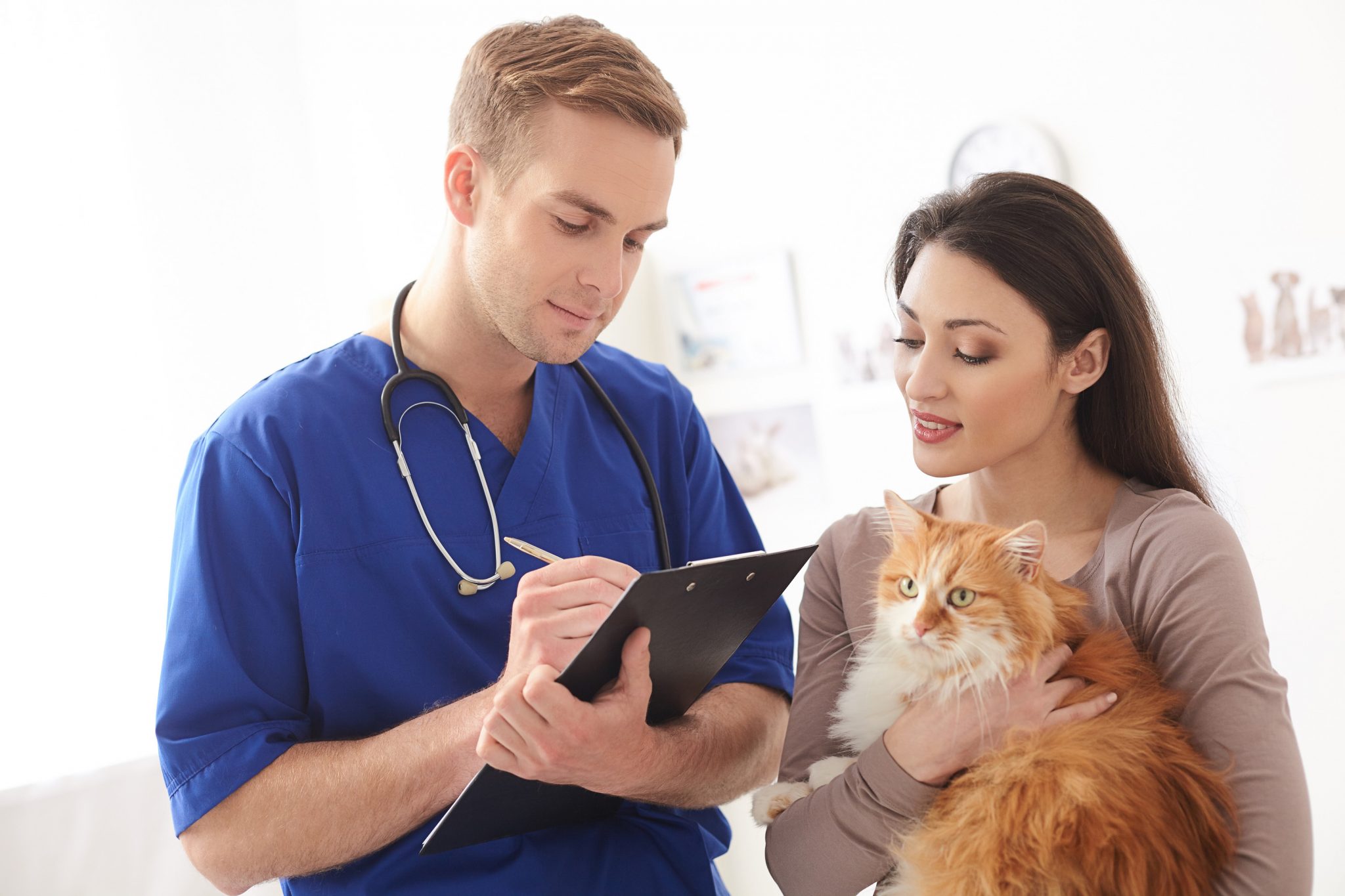
Great job on making a checkup appointment for your cat! Routine checkups are needed by cats to keep them happy and healthy.
When you bring your cat to the veterinary office, she needs to feel your confidence and reassurance, especially if she is sick or not feeling well. Your behavior greatly influences your cat’s sense of security and behavior before, during, and after the veterinary visit.
Your Role in Preparing for the Veterinary Visit
The Carrier
The first step is to start getting your cat comfortable with the carrier. If your cat runs away when you take out the carrier, that is a sign you need to try and acclimate or make her comfortable with the carrier.
We suggest you start weeks before the checkup, and keep the carrier out in a common area where your cat spends a lot of time. Try removing the top or door of the carrier, placing a fluffy towel or blanket inside the carrier, and even putting in a few of her favorite cat treats. This can encourage your cat to go into the carrier. Remain patient! It can take weeks or even months, but ultimately getting your cat comfortable with the carrier will make it easier on the day of your appointment.
Before Checkup Day
If you know your cat gets stressed by going to the veterinary practice, call your veterinarian and ask about anti-anxiety medication that you can give to her before your visit.
On Checkup Day
To avoid motion sickness, you should withhold food from your cat for several hours before your appointment. Bring your cat’s favorite treats with you. Then you or a veterinary team member can give her a treat as a reward or distraction. Consider using a synthetic feline facial pheromone spray (e.g. Feliway®) in the carrier and car at least 10-15 minutes prior to help calm your cat. Place a favorite toy and familiar smelling clothing or bedding in the carrier to help your cat feel more comfortable. It is also helpful to cover the carrier with a towel to block unfamiliar sights and muffle sounds from your cat.
Your Role at the Veterinary Practice
Your cat can sense your stress, anxiety, and apprehension, all of which can increase her stress. Here are some tips to help create a more positive veterinary visit:
While Waiting for Your Checkup
If your cat is very anxious in the waiting area, or if dogs are present, ask the receptionist if you can go immediately to an examination room. If an exam room is not ready, let the receptionist know you will be waiting in your car with your cat (with appropriate heating and cooling during extreme weather). Ask them to call you when the exam room is ready for you to enter.
Examination Room
Once you are in the exam room with your cat, talk soothingly to her in a low-pitched voice. Avoid behaviors, that while intended to comfort your cat, may actually increase her anxiety. These can include: clutching your cat, talking or staring in her face, and disturbing or invading her personal space. Human sounds intended to soothe or quiet, like “shhh,” may mimic another cat hissing and should be avoided.
Reinforce your cat’s positive behavior with gentle slow petting or treats, and ignore any negative behavior from your cat instead of trying to correct it. Physical correction such as tapping your cat’s head and verbal reprimands should be always avoided because they may startle your cat and provoke the fight-or-flight response. Remember, cats are not human, and react differently to discipline. Do not handle or remove your cat from the carrier until requested by a veterinary team member.
Hospitalization
If your cat must stay in the hospital, bring along familiar toys and bedding from home. Provide the name of the cat litter and food you routinely give your cat. Also, let veterinary staff know anything your cat particularly enjoys, such as treats, brushing, or play-time activities. The veterinary staff can use this information to help make your cat’s stay more pleasant.

